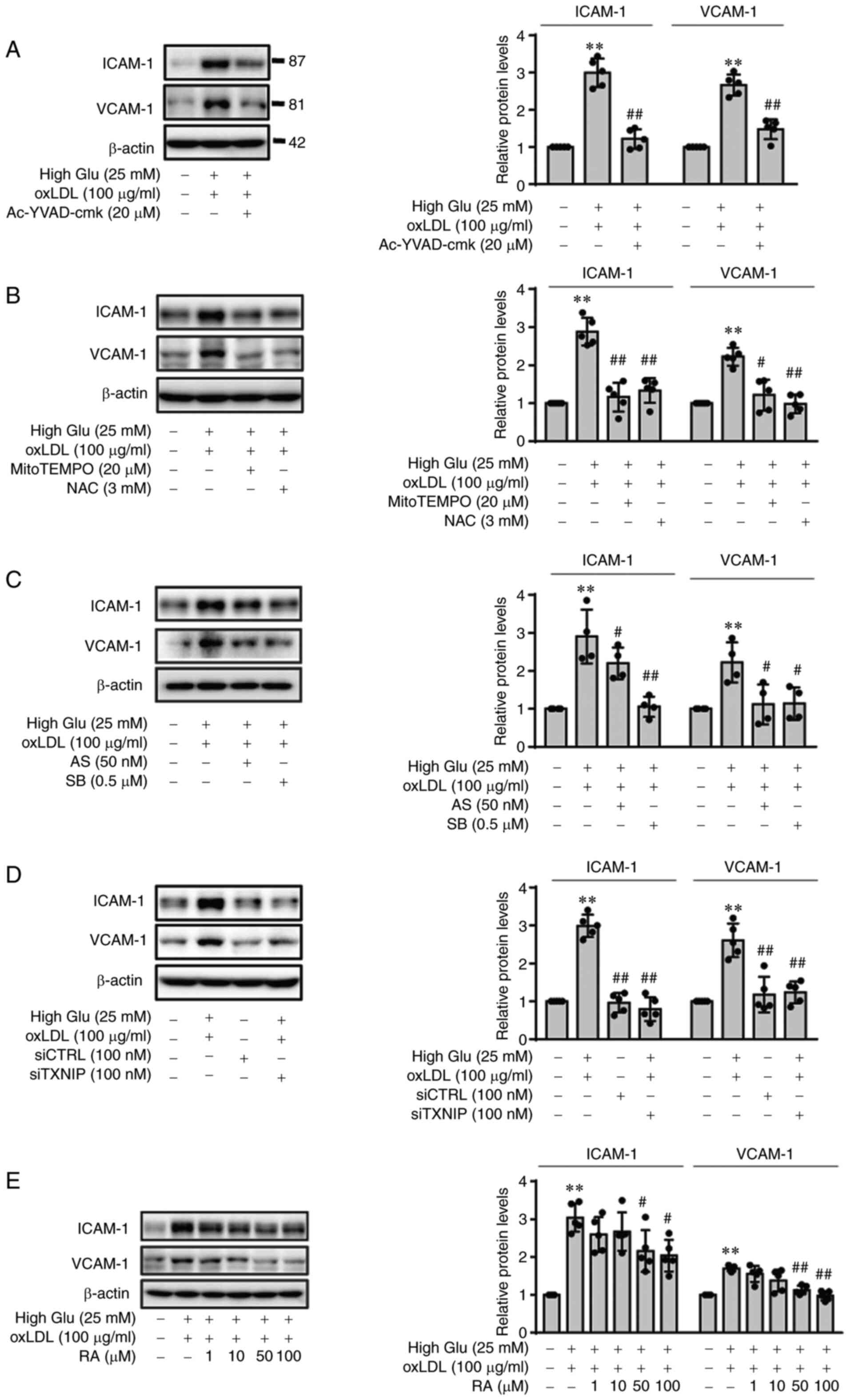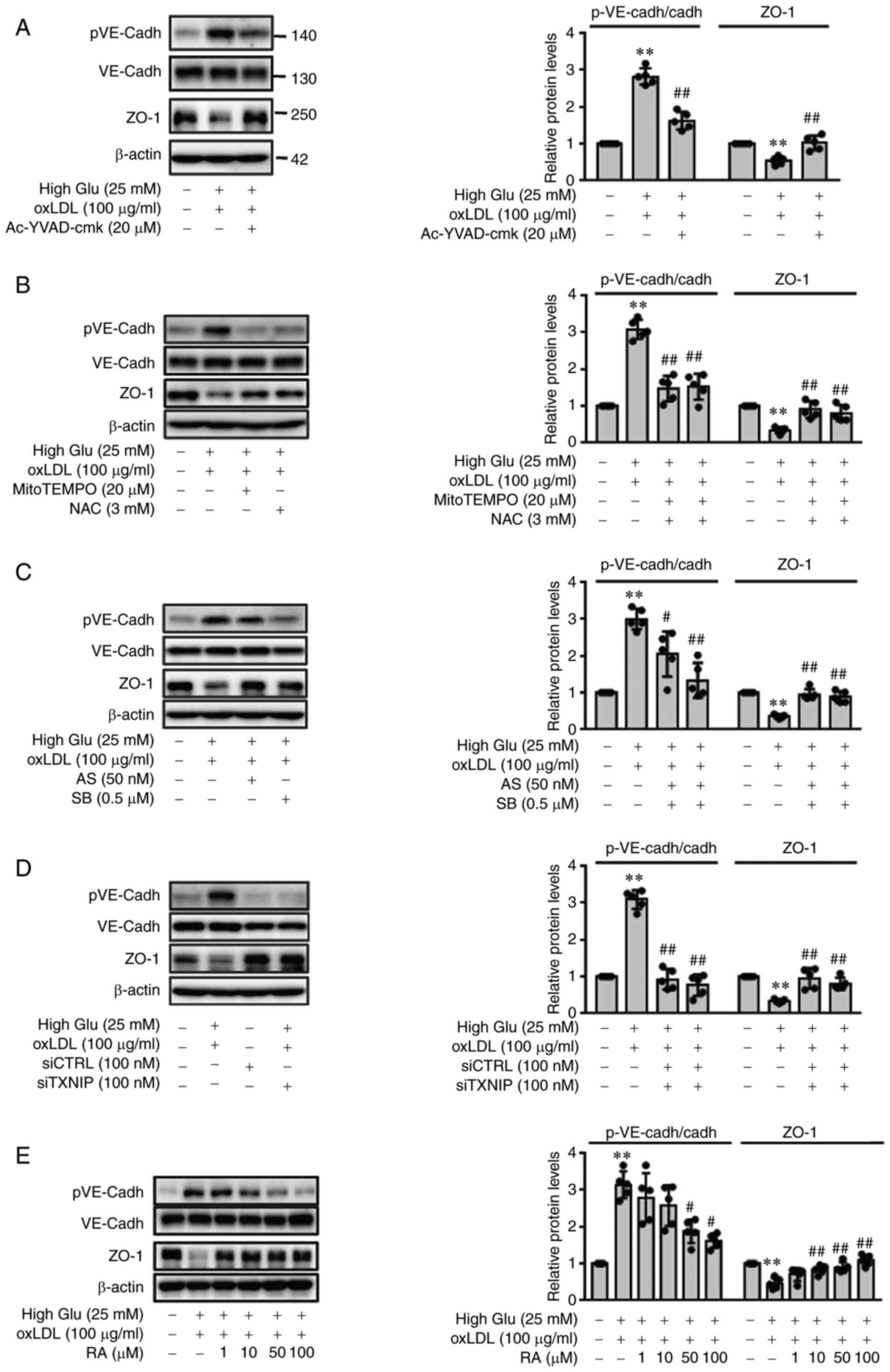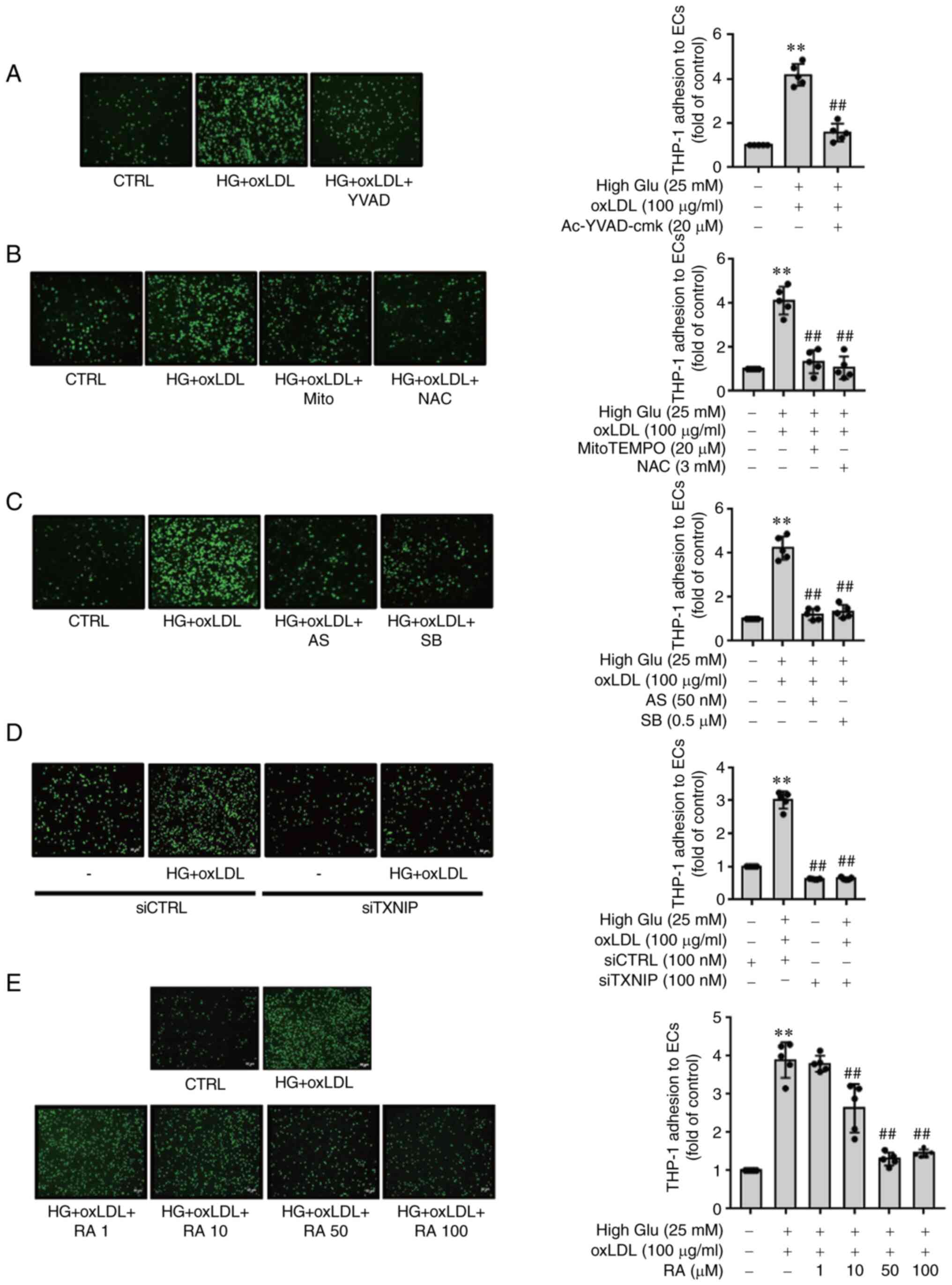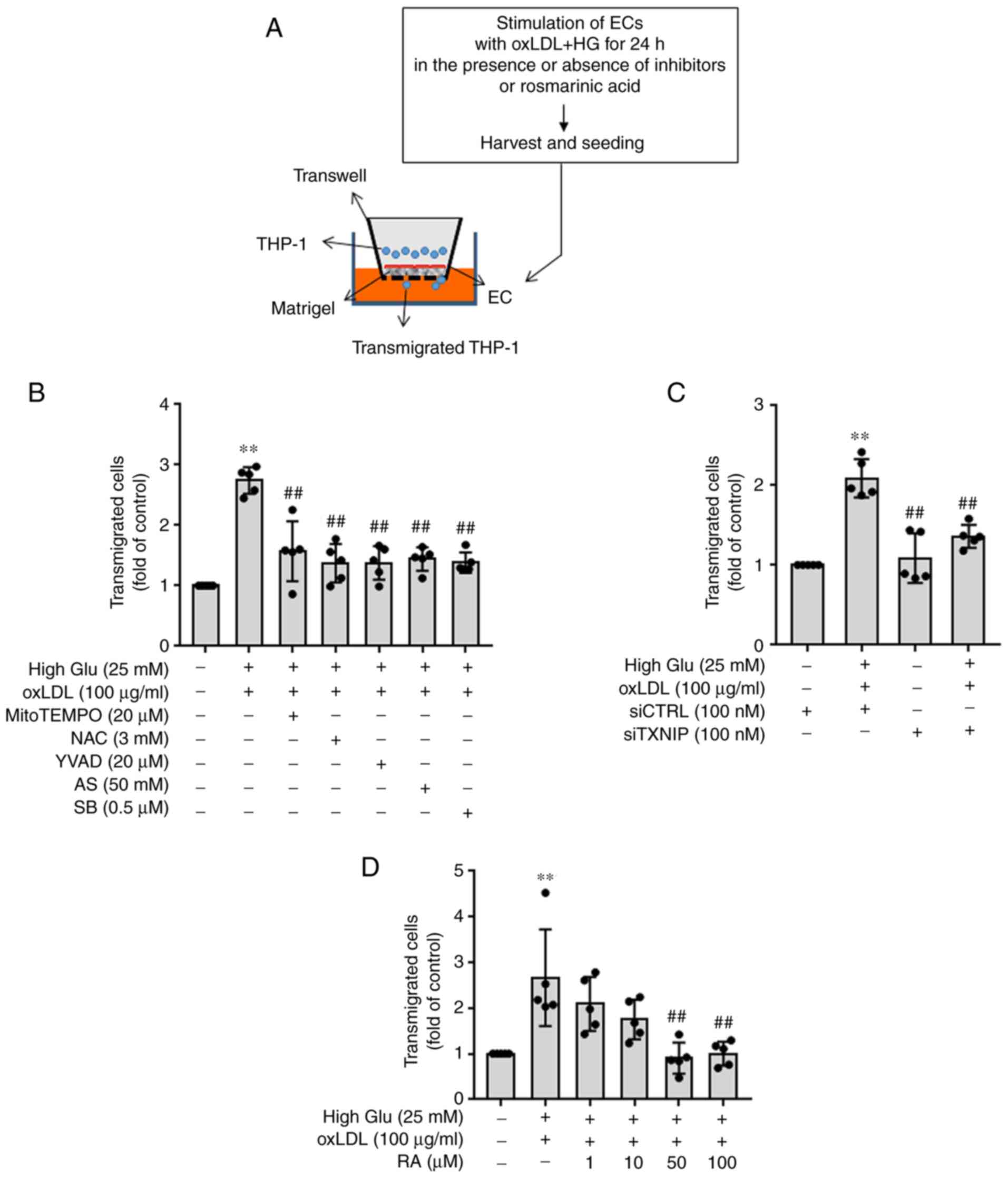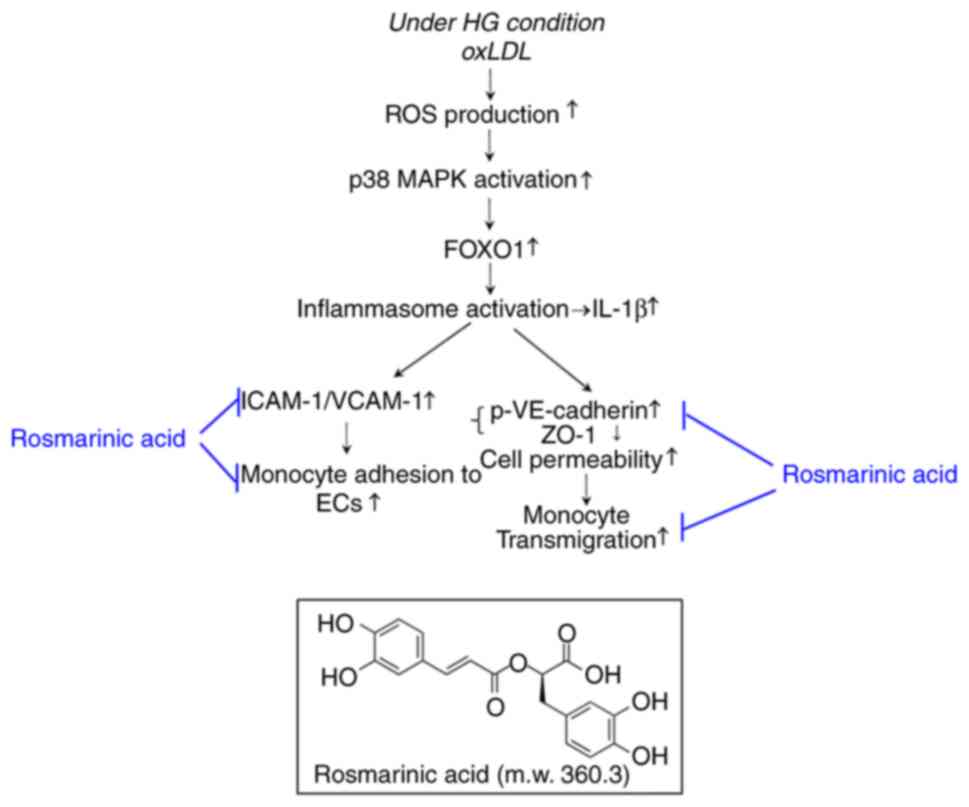|
1
|
Sluiter TJ, van Buul JD, Huveneers S, Quax
PHA and de Vries MR: Endothelial barrier function and leukocyte
transmigration in atherosclerosis. Biomedicines. 9:3282021.
View Article : Google Scholar : PubMed/NCBI
|
|
2
|
Taddei A, Giampietro C, Conti A, Orsenigo
F, Breviario F, Pirazzoli V, Potente M, Daly C, Dimmeler S and
Dejana E: Endothelial adherens junctions control tight junctions by
VE-cadherin-mediated upregulation of claudin-5. Nat Cell Biol.
10:923–934. 2008. View
Article : Google Scholar : PubMed/NCBI
|
|
3
|
Chistiakov DA, Orekhov AN and Bobryshev
YV: Endothelial barrier and its abnormalities in cardiovascular
disease. Front Physiol. 6:3652015. View Article : Google Scholar : PubMed/NCBI
|
|
4
|
Sena CM, Pereira AM and Seiça R:
Endothelial dysfunction-a major mediator of diabetic vascular
disease. Biochim Biophys Acta. 1832:2216–2231. 2013. View Article : Google Scholar : PubMed/NCBI
|
|
5
|
Bai B, Yang Y, Wang Q, Li M, Tian C, Liu
Y, Aung LH, Li PF, Yu T and Chu XM: NLRP3 inflammasome in
endothelial dysfunction. Cell Death Dis. 11:7762020. View Article : Google Scholar : PubMed/NCBI
|
|
6
|
Katakami N: Mechanism of development of
atherosclerosis and cardiovascular disease in diabetes mellitus. J
Atheroscler Thromb. 25:27–39. 2018. View Article : Google Scholar :
|
|
7
|
Mittal M, Siddiqui MR, Tran K, Reddy SP
and Malik AB: Reactive oxygen species in inflammation and tissue
injury. Antioxid Redox Signal. 20:1126–1167. 2014. View Article : Google Scholar :
|
|
8
|
Hamed S, Brenner B, Abassi Z, Aharon A,
Daoud D and Roguin A: Hyperglycemia and oxidized-LDL exert a
deleterious effect on endothelial progenitor cell migration in type
2 diabetes mellitus. Thromb Res. 126:166–174. 2010. View Article : Google Scholar : PubMed/NCBI
|
|
9
|
Ko YS, Jin H, Park SW and Kim HJ:
Salvianolic acid B protects against oxLDL-induced endothelial
dysfunction under high-glucose conditions by downregulating
ROCK1-mediated mitophagy and apoptosis. Biochem Pharmacol.
174:1138152020. View Article : Google Scholar : PubMed/NCBI
|
|
10
|
Akhmedov A, Rozenberg I, Paneni F, Camici
GG, Shi Y, Doerries C, Sledzinska A, Mocharla P, Breitenstein A,
Lohmann C, et al: Endothelial overexpression of LOX-1 increases
plaque formation and promotes atherosclerosis in vivo. Eur Heart J.
35:2839–2848. 2014. View Article : Google Scholar : PubMed/NCBI
|
|
11
|
Matheus AS, Tannus LR, Cobas RA, Palma CC,
Negrato CA and Gomes MB: Impact of diabetes on cardiovascular
disease: An update. Int J Hypertens. 2013:6537892013. View Article : Google Scholar : PubMed/NCBI
|
|
12
|
Claesson-Welsh L, Dejana E and McDonald
DM: Permeability of the endothelial barrier: Identifying and
reconciling controversies. Trends Mol Med. 27:314–331. 2021.
View Article : Google Scholar :
|
|
13
|
Dejana E, Tournier-Lasserve E and
Weinstein BM: The control of vascular integrity by endothelial cell
junctions: Molecular basis and pathological implications. Dev Cell.
16:209–221. 2009. View Article : Google Scholar : PubMed/NCBI
|
|
14
|
Giannotta M, Trani M and Dejana E:
VE-cadherin and endothelial adherens junctions: Active guardians of
vascular integrity. Dev Cell. 26:441–454. 2013. View Article : Google Scholar : PubMed/NCBI
|
|
15
|
Chattopadhyay R, Dyukova E, Singh NK, Ohba
M, Mobley JA and Rao GN: Vascular endothelial tight junctions and
barrier function are disrupted by 15(S)-hydroxyeicosatetraenoic
acid partly via protein kinase C ε-mediated zona occludens-1
phosphorylation at threonine 770/772. J Biol Chem. 289:3148–3163.
2014. View Article : Google Scholar
|
|
16
|
Tornavaca O, Chia M, Dufton N, Almagro LO,
Conway DE, Randi AM, Schwartz MA, Matter K and Balda MS: ZO-1
controls endothelial adherens junctions, cell-cell tension,
angiogenesis, and barrier formation. J Cell Biol. 208:821–838.
2015. View Article : Google Scholar : PubMed/NCBI
|
|
17
|
Orsenigo F, Giampietro C, Ferrari A,
Corada M, Galaup A, Sigismund S, Ristagno G, Maddaluno L, Koh GY,
Franco D, et al: Phosphorylation of VE-cadherin is modulated by
haemodynamic forces and contributes to the regulation of vascular
permeability in vivo. Nat Commun. 3:12082012. View Article : Google Scholar : PubMed/NCBI
|
|
18
|
Wessel F, Winderlich M, Holm M, Frye M,
Rivera-Galdos R, Vockel M, Linnepe R, Ipe U, Stadtmann A, Zarbock
A, et al: Leukocyte extravasation and vascular permeability are
each controlled in vivo by different tyrosine residues of
VE-cadherin. Nat Immunol. 15:223–230. 2014. View Article : Google Scholar : PubMed/NCBI
|
|
19
|
Hsieh SL, Wang JJ, Su KH, Kuo YL, Hsieh S
and Wu CC: Suppressive effects of the gynura bicolor ether extract
on endothelial permeability and leukocyte transmigration in human
endothelial cells induced by TNF-α. Evid Based Complement Alternat
Med. 2020:94137242020. View Article : Google Scholar
|
|
20
|
Lian D, Yuan H, Yin X, Wu Y, He R, Huang Y
and Chen Y: Puerarin inhibits hyperglycemia-induced
inter-endothelial junction through suppressing endothelial Nlrp3
inflammasome activation via ROS-dependent oxidative pathway.
Phytomedicine. 55:310–319. 2019. View Article : Google Scholar
|
|
21
|
Zhou X, Wu Y, Ye L, Wang Y, Zhang K, Wang
L, Huang Y, Wang L, Xian S, Zhang Y and Chen Y: Aspirin alleviates
endothelial gap junction dysfunction through inhibition of NLRP3
inflammasome activation in LPS-induced vascular injury. Acta Pharm
Sin B. 9:711–723. 2019. View Article : Google Scholar : PubMed/NCBI
|
|
22
|
Kim GD, Park YS, Jin YH and Park CS:
Production and applications of rosmarinic acid and structurally
related compounds. Appl Microbiol Biotechnol. 99:2083–2092. 2015.
View Article : Google Scholar : PubMed/NCBI
|
|
23
|
Karthik D, Viswanathan P and Anuradha CV:
Administration of rosmarinic acid reduces cardiopathology and blood
pressure through inhibition of p22phox NADPH oxidase in
fructose-fed hypertensive rats. J Cardiovasc Pharmacol. 58:514–521.
2011. View Article : Google Scholar : PubMed/NCBI
|
|
24
|
Sotnikova R, Okruhlicova L, Vlkovicova J,
Navarova J, Gajdacova B, Pivackova L, Fialova S and Krenek P:
Rosmarinic acid administration attenuates diabetes-induced vascular
dysfunction of the rat aorta. J Pharm Pharmacol. 65:713–723. 2013.
View Article : Google Scholar : PubMed/NCBI
|
|
25
|
Nyandwi JB, Ko YS, Jin H, Yun SP, Park SW
and Kim HJ: Rosmarinic acid inhibits oxLDL-induced inflammasome
activation under high-glucose conditions through downregulating the
p38-FOXO1-TXNIP pathway. Biochem Pharmacol. 182:1142462020.
View Article : Google Scholar : PubMed/NCBI
|
|
26
|
Jin H, Ko YS, Park SW and Kim HJ:
P2Y2R activation by ATP induces oxLDL-mediated
inflammasome activation through modulation of mitochondrial damage
in human endothelial cells. Free Radic Biol Med. 136:109–117. 2019.
View Article : Google Scholar : PubMed/NCBI
|
|
27
|
Wan Z, Fan Y, Liu X, Zue J, Han Z, Zhu C
and Wang Z: NLRP3 inflammasome promotes diabetes-induced
endothelial inflammation and atherosclerosis. Diabetes Metab Syndr
Obes. 12:1931–1942. 2019. View Article : Google Scholar : PubMed/NCBI
|
|
28
|
Hashimoto K, Kataoka N, Nakamura E,
Tsujioka K and Kajiya F: Oxidized LDL specifically promotes the
initiation of monocyte invasion during transendothelial migration
with upregulated PECAM-1 and downregulated VE-cadherin on
endothelial junctions. Atherosclerosis. 194:e9–e17. 2007.
View Article : Google Scholar
|
|
29
|
Santos JC, Cruz MS, Bortolin RH, Oliveira
KM, Araújo JN, Duarte VH, Silva AM, Santos IC, Dantas JM, Paiva MS,
et al: Relationship between circulating VCAM-1, ICAM-1, E-selectin
and MMP9 and the extent of coronary lesions. Clinics (Sao Paulo).
73:e2032018. View Article : Google Scholar
|
|
30
|
Rubio-Guerra AF, Vargas-Robles H, Serrano
AM, Lozano-Nuevo JJ and Escalante-Acosta BA: Correlation between
the levels of circulating adhesion molecules and atherosclerosis in
type-2 diabetic normotensive patients: Circulating adhesion
molecules and atherosclerosis. Cell Adh Migr. 3:369–372. 2009.
View Article : Google Scholar : PubMed/NCBI
|
|
31
|
Huang Z, Cai X, Li S, Zhou H, Chu M, Shan
P and Huang W: Berberine-attenuated monocyte adhesion to
endothelial cells induced by oxidized low-density lipoprotein via
inhibition of adhesion molecule expression. Mol Med Rep. 7:461–465.
2013. View Article : Google Scholar
|
|
32
|
Chen JS, Chen YH, Huang PH, Tsai HY, Chen
YL, Lin SJ and Chen JW: Ginkgo biloba extract reduces
high-glucose-induced endothelial adhesion by inhibiting the
redox-dependent interleukin-6 pathways. Cardiovasc Diabetol.
11:492012. View Article : Google Scholar : PubMed/NCBI
|
|
33
|
Cejkova S, Kubatova H, Thieme F, Janousek
L, Fronek J, Poledne R and Lesna I: The effect of cytokines
produced by human adipose tissue on monocyte adhesion to the
endothelium. Cell Adh Migr. 13:293–302. 2019. View Article : Google Scholar : PubMed/NCBI
|
|
34
|
van Wetering S, van den Berk N, van Buul
JD, Mul FP, Lommerse I, Mous R, ten Klooster JP, Zwaginga JJ and
Hordijk PL: VCAM-1-mediated Rac signaling controls endothelial
cell-cell contacts and leukocyte transmigration. Am J Physiol Cell
Physiol. 285:C343–C352. 2003. View Article : Google Scholar : PubMed/NCBI
|
|
35
|
Demyanets S, Konya V, Kastl SP, Kaun C,
Rauscher S, Niessner A, Pentz R, Pfaffenberger S, Rychli K,
Lemberger CE, et al: Interleukin-33 induces expression of adhesion
molecules and inflammatory activation in human endothelial cells
and in human atherosclerotic plaques. Arterioscler Thromb Vasc
Biol. 31:2080–2089. 2011. View Article : Google Scholar : PubMed/NCBI
|
|
36
|
Kim DS, Kim HR, Woo ER, Hong ST, Chae HJ
and Chae SW: Inhibitory effects of rosmarinic acid on
adriamycin-induced apoptosis in H9c2 cardiac muscle cells by
inhibiting reactive oxygen species and the activations of c-Jun
N-terminal kinase and extracellular signal-regulated kinase.
Biochem Pharmacol. 70:1066–1078. 2005. View Article : Google Scholar : PubMed/NCBI
|
|
37
|
Li L, Tian J and Liang X: Regression of
atherosclerosis by rosmarinic acid via regulating lipid metabolism
and anti-inflammatory actions. J Mol Cell Cardiol. 44:P7192008.
View Article : Google Scholar
|
|
38
|
Jian D, Wang Y, Jian L, Tang H, Rao L,
Chen K, Jia Z, Zhang W, Liu Y, Chen X, et al: METTL14 aggravates
endothelial inflammation and atherosclerosis by increasing FOXO1
N6-methyladeosine modifications. Theranostics. 10:8939–8956. 2020.
View Article : Google Scholar : PubMed/NCBI
|
|
39
|
Liang B, Wang X, Zhang N, Yang H, Bai R,
Liu M, Bian Y, Xiao C and Yang Z: Angiotensin-(1-7) attenuates
angiotensin II-induced ICAM-1, VCAM-1, and MCP-1 expression via the
MAS receptor through suppression of P38 and NF-κB pathways in
HUVECs. Cell Physiol Biochem. 35:2472–2482. 2015. View Article : Google Scholar
|
|
40
|
Reglero-Real N, Colom B, Bodkin JV and
Nourshargh S: Endothelial cell junctional adhesion molecules: Role
and regulation of expression in inflammation. Arterioscler Thromb
Vasc Biol. 36:2048–2057. 2016. View Article : Google Scholar : PubMed/NCBI
|
|
41
|
Sukriti S, Tauseef M, Yazbeck P and Mehta
D: Mechanisms regulating endothelial permeability. Pulm Circ.
4:535–551. 2014. View
Article : Google Scholar
|
|
42
|
Gavard J: Endothelial permeability and
VE-cadherin: A wacky comradeship. Cell Adh Migr. 7:455–461. 2013.
View Article : Google Scholar
|















